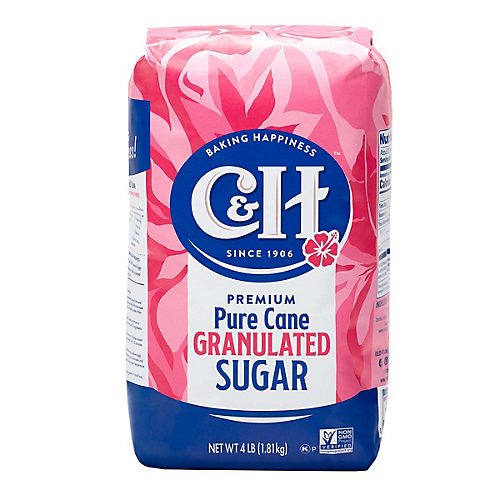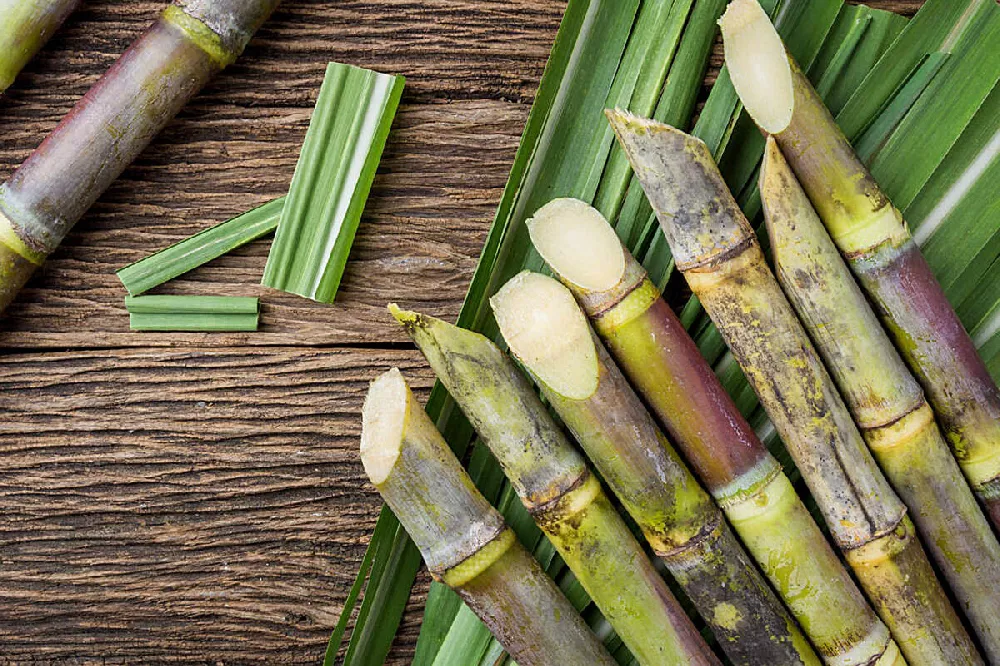Cane Sugar Processing: Ingenious Strategies for Top Quality Production
Cane Sugar Processing: Ingenious Strategies for Top Quality Production
Blog Article
A Thorough Guide to the Environmental Impact and Sustainability Practices in Walking Stick Sugar Handling
The environmental impact of walking cane sugar handling provides an intricate range of challenges that warrant mindful examination. From dirt deterioration and too much water use to the carbon impact linked with growing and manufacturing, the consequences of traditional methods are far-reaching. On the other hand, the adoption of innovative sustainability actions uses a path toward more responsible manufacturing approaches. Recognizing the interplay between these concerns is crucial for stakeholders in the sector. What specific practices can be applied to strike an equilibrium in between performance and environmental stewardship? The answers depend on a more detailed look at both the difficulties and potential remedies.
Summary of Cane Sugar Handling
Walking cane sugar handling involves a series of organized actions that change sugarcane right into polished sugar. At first, collected sugarcane is transferred to refining centers, where it undergoes cleansing to get rid of dirt and debris. Following this, the walking cane is crushed to extract juice, which is then cleared up by eliminating impurities via heating and the addition of lime.
The made clear juice goes through dissipation, where water is gotten rid of to concentrate the sugar content. These crystals are separated from the remaining syrup using centrifugation, resulting in raw sugar.
The end product is then dried and packaged for circulation. Throughout this whole procedure, keeping efficiency and top quality control is necessary to guarantee the sugar meets sector criteria. Each step in cane sugar processing not only adds to the final item yet additionally has ramifications for resource usage and waste generation, setting the stage for discussions on sustainability and environmental impacts related to sugar manufacturing.
Environmental Obstacles of Production
The manufacturing of cane sugar provides numerous significant environmental difficulties that warrant interest. One key problem is the extensive usage of agrochemicals, consisting of pesticides and fertilizers, which can lead to dirt destruction, biodiversity loss, and contamination of neighborhood water sources. The drainage from sugarcane areas frequently lugs these chemicals into close-by ecological communities, interrupting marine life and impacting the health and wellness of communities reliant on these water bodies.
Another obstacle is the high power usage connected with sugarcane processing. The boiling and refining phases require significant warm, mainly created by burning fossil fuels, contributing to greenhouse gas discharges. Additionally, the extensive acreage needed for sugarcane cultivation can lead to deforestation and habitat damage, additional worsening environment modification and harmful wildlife.
Moreover, the labor methods in some regions elevate moral problems, as workers may face bad working conditions and poor earnings. This circumstance typically bolsters a cycle of poverty in local areas. Cane Sugar Processing. Addressing these environmental difficulties is crucial for establishing a lot more lasting practices in walking stick sugar production, inevitably profiting both the environment and the areas associated with this market
Water and Land Use Effect
Water resources and land use are essential elements in the walking stick sugar market that dramatically impact the setting. The cultivation of sugarcane calls for considerable water input, with price quotes recommending that it can take in as much as 2,000 litres of water per kilo of sugar generated. This intensive use water usually causes depletion of local water resources, impacting not just the sugarcane haciendas but additionally surrounding ecosystems and communities that depend on the very same water resources for agriculture and domestic usage.

In addition, land use for sugarcane cultivation can result in logging and the conversion of all-natural environments into monoculture ranches. This practice diminishes biodiversity, disrupts neighborhood environments, and contributes to soil destruction. The expansion of sugarcane areas frequently intrudes on important agricultural land, creating competitors for resources in between food and biofuel manufacturing.
Lasting methods, such as optimizing watering techniques and executing crop rotation, are vital to reduce these impacts. By taking on a Get More Information lot more effective water usage and land management approaches, the walking stick sugar market can reduce its eco-friendly impact, ensuring an equilibrium between agricultural productivity and environmental conservation.
Greenhouse Gas Emissions
Greenhouse gas exhausts represent a considerable ecological issue within the cane sugar processing market, specifically as farming techniques broaden to fulfill international demand. The farming of sugarcane, a crop that grows in tropical climates, counts heavily on synthetic plant foods and chemicals, which add to laughing gas exhausts. Additionally, land-use changes, consisting of logging for new sugarcane plantations, launch carbon dioxide stored in plants and dirt.
During processing, power usage is another major resource of greenhouse gas emissions - Cane Sugar Processing. Lots of sugar mills use nonrenewable fuel sources to power machinery and create warmth, causing substantial carbon impacts. Furthermore, the transportation of raw sugarcane and ended up products adds layers of exhausts through gas combustion in automobiles
The cumulative result of these emissions aggravates climate change, positioning dangers not just to the atmosphere however additionally to the long-lasting stability of the sector. Stakeholders should recognize the urgent requirement for comprehensive strategies that attend to these exhausts. This includes evaluating current farming methods, processing techniques, and transportation systems to identify locations for improvement and reduction. Attending to greenhouse gas exhausts is vital for promoting a much more sustainable walking cane sugar industry in a transforming environment.

Sustainable Practices and Innovations
Lasting practices and advancements are significantly essential in the cane sugar processing industry as stakeholders seek to minimize environmental impacts while keeping performance. One considerable improvement is the execution of incorporated plant management, which maximizes source usage by integrating dirt monitoring, bug control, and crop rotation methods. This approach enhances yield while decreasing chemical inputs and maintaining soil health and wellness.
In addition, the fostering of sustainable power resources, such as biomass from sugarcane residues, has actually acquired grip - Cane Sugar Processing. By transforming waste items right into energy, refining facilities can minimize their dependence on nonrenewable fuel sources, thereby decreasing greenhouse gas discharges
Water management techniques have actually additionally seen enhancements with the recycling and reusing of water in processing plants, considerably lowering freshwater usage. Technologies in innovation, such as accuracy farming, make it possible for farmers to monitor plant health and wellness and source use more effectively, making certain sustainable growing practices.
Moreover, certification programs like Fair Trade and Rain forest Partnership urge environmentally liable farming techniques and advertise social equity within the supply chain. By welcoming these sustainable methods and innovations, the cane sugar handling sector can enhance its strength and add favorably here to environmental stewardship.
Verdict
The environmental impact of walking cane sugar handling offers substantial difficulties, consisting of soil deterioration, high water usage, and greenhouse gas discharges, together with ethical worries related to labor methods. Addressing these concerns via lasting practices, such as useful site incorporated crop monitoring, renewable resource adoption, and water recycling, is necessary. By advertising socially fair and ecologically responsible techniques in sugar production, the market can minimize its unfavorable results, guaranteeing a more lasting future for both environments and neighborhoods associated with this sector.
Walking stick sugar handling includes a collection of methodical actions that change sugarcane into refined sugar. Each step in cane sugar processing not only contributes to the last item yet likewise has effects for resource usage and waste generation, establishing the stage for discussions on sustainability and environmental influences linked with sugar manufacturing.
Greenhouse gas discharges stand for a substantial ecological issue within the walking stick sugar processing sector, specifically as farming practices expand to meet worldwide need.Lasting practices and developments are significantly vital in the walking stick sugar handling sector as stakeholders look for to minimize ecological influences while maintaining efficiency.The ecological impact of cane sugar handling offers substantial difficulties, including dirt destruction, high water usage, and greenhouse gas emissions, together with moral concerns connected to labor techniques.
Report this page